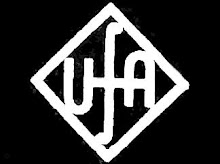D. H. Lawrence
there is always time to make right
what is wrong,
there is always a time
for retribution
Susan Griffin, I Like To Think of Harriet Tubman
I disliked the film Fight Club immensely when I first saw it, so much so that I refused to sit through the entire thing. It was only later, in 2006, when I did see it in full that I was insatiably drawn into the enchantment that it spread, for the film does end with four skyscrapers owned by credit card companies being demolished by explosions, planned and detonated by Edward Norton's increasingly self-sufficient schizoid character, Tyler Durden. (Norton's main character, the narrator, remains nameless.)
At this point, refer to a synopsis of the film on Wikipedia or the IMDb; I shall write as if we had all seen it. I will excerpt a portion of the Wikipedia article to give a taste of the analysis of the film:
The violence of the fight clubs serves not to promote or glorify physical combat, but for participants to experience feeling in a society where they are otherwise numb. The fights tangibly represent a resistance to the impulse to be "cocooned" in society. Norton believed that the fighting between the men strips away the "fear of pain" and "the reliance on material signifiers of their self-worth", leaving them to experience something valuable. When the fights evolve into revolutionary violence, the film only half-accepts the revolutionary dialectic by Tyler Durden; the narrator pulls back and rejects Durden's ideas. Fight Club purposely shapes an ambiguous message, the interpretation of which is left to the audience. Fincher elaborated, "I love this idea that you can have fascism without offering any direction or solution. Isn't the point of fascism to say, 'This is the way we should be going'? But this movie couldn't be further from offering any kind of solution."I intend to write more fully on the "poesis" of Fight Club later. Now it is enough to know that my watching the film - which features large structures of the financial district being demolished - was very different after September 11, 2001, a date which featured large structures of the financial district being demolished.
The film was no longer about any one thing or one topic anymore: by becoming prophetic, it had become much, much more, and it transcended all the precious analyses couched in the popular idiom, such as the Wiki article above; indeed, the film had transcended the conscious intent and meaning of its creators... which is a signature of great art.
Then we had the sequel in time, the sequel for which the film Fight Club was the uncanny prequel; we had the sequel which could have outrageously been entitled "The Financial System Strikes Back" after the manner of Star Wars in conscious and deeply wounding irony!
We had the Financial Meltdown of 2008.
At this point, I went back and viewed the film again, and then again. There was the promise of discord and discontent on the wind, and I wanted to go back to the original gospel - as it were - and see what was going down.
Then it occurred to me that John Brown's crusade against slavery before the American Civil War was a paradigm for the type of mixture of Ideology and Violence that was portrayed in the film. John Brown had fough in Lawrence, Kansas, 1856, when pro-slavery raiders were preparing to attack the town of free-soilers, and had fought elsewhere. He was bringing the fight into the homeland of the enemy when he launched his attack on Harper's Ferry, Virginia.
John Brown sacrificed even his sons in the cause of abolishing slavery.
His violence was not so abhorrent, though, that society excoriated him, rather people in the North sang a ditty, John Brown's Body, where "His soul's marchin' on", the tune of which eventually became "The Battle Hymn of the Republic" when war did break out.
So is John Brown a figure of Osama and Tyler Durden, or is he us? Over time, the film has become very dense with meaning to me, and there is no easy way to understanding, like Cliffs' Notes on Moby Dick which states that the White Whale is a metaphor for God; there you have your term paper, and your comprehension of the work of art involved is just a millimeter deeper than the enjoyment of a summer vacation reader who reads on the beach, and at no time else.
Metaphor begets metaphor and understanding is a maze full of surprises, pleasant and unpleasant. Usually we stop before we go too far. We focus on what is at hand, and that will suffice. We do not wish to become like Ahab in his obsession... for the White Whale as God is a monstrous Understanding and Knowledge that exists just beyond the encompass of our boats and the harpoon barb of our intellect.
It is very complex and infinitely detailed. It is as labyrinthine as our emotions and desires. By studying the intricacies of art over time, we may come upon the meanings that are important for us here at this time. What profound and appalling lessons might John Brown or Tyler Durden have for us?
--
(note: Tyler Durden's plot is called Project Mayhem, perhaps redolent of Helter-Skelter. Edward Norton's nameless narrator, whose job was to let auto companies avoid recall by calculating the cost of a recall against the cost of settlements with the families of the people killed in car crashes and mishaps, realized that the Extremism of Project Mayhem was anti-human; whether the extremism came from the Left or the Right, the outcome was the diminishment of the value of human life.
This is clearly illustrated in the episode when big Bob is shot while on assignment for Project Mayhem.)
--



















2 comments:
Very interesting . . . John Brown may indeed be us, the ideologues who would pull down the temple on on all our heads. But a large portion of our society would instead be Brown's victims in Kansas who got hacked to death with broadswords.
Good thing I have you to peel apart "Fight Club." Otherwise, I would still be baffled. :-)
I saw it at just the right time and in the right frame of mind.
And I had already seen most of it before, so I was not watching to be "entertained".
The exploding buildings, seen after 2001, just blew me away. I was in one of those states when you're not sure if you are dreaming or awake. I am not kidding. I could not believe what I was seeing: the destruction of skyscrapers in the financial district!
(Of course, Palawniuk had had the aborted attempt against the WTC in 1993 to go by.)
Anyway, the film became sort of like King Kong then, and it escaped into the world.
Post a Comment